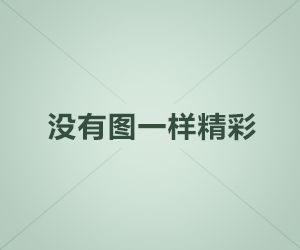如何治疗脚扭伤配图,仅供参考
Acute inflammatory phase (24-72 hours)The initial goals of therapy are to limit inflammation,reduce pain,and protect from further injury. [2,25,26](https://ncbi.nlm.nih.gov/pmc/articles/PMC3259913/#bb0010)
Ice therapy should be applied for 20 minutes on/1 hour off throughout the day,with a compression bandage and the leg elevated above the heart. Cryotherapy reduces pain,edema,and secondary hypoxic damage to injured tissues. [2,55,62,63](https://ncbi.nlm.nih.gov/pmc/articles/PMC3259913/#bb0010)
Nonsteroidal anti-inflammatory drugs,electric muscle stimulation,pulsed ultrasound,antiedema massage,and low-level laser therapy may help in reducing inflammation. [2,26,34](https://ncbi.nlm.nih.gov/pmc/articles/PMC3259913/#bb0010)
Ankle pumps,10 to 20 pumps per hour,should be conducted in a pain-free range to decrease edema and increase circulation.
Ambulate—weightbearing as tolerated—with axillary crutches if necessary. A semirigid orthosis,lace-up style brace,or tape provides mechanical joint stability in the frontal plane.
Depending on the severity of injury,pain-free modified activity can be used to maintain cardiovascular fitness. Examples of modified activity may include deep-water pool running,swimming with a pool buoy between the legs,or stationary cycling. [5,26,29](https://ncbi.nlm.nih.gov/pmc/articles/PMC3259913/#bb0025)
Several studies were conducted on grade 1 and grade 2 ankle inversion injuries using manipulation of the TCJ. Two studies showed manipulation of the talus in an anterior to posterior vector improved range of motion in dorsiflexion at the ankle mortise. Another study showed that manipulation of the joints and soft tissue improved dorsiflexion as well as reduced pain and edema.
• Active or passive soft tissue techniques such as Active Release Technique,Graston Technique,muscle energy technique,and transverse friction massage can be applied directly to the ligament and surrounding soft tissue structures to facilitate early ligament healing.
Numerous clinical studies support the use of transverse friction massage in the treatment of ligament sprains. Recently,Loghmani and Warden conducted a study on instrument-assisted cross-fiber massage (IACFM) and its effect on ligament healing. Bilateral MCL injuries were induced on the knees of 51 rodents. The IACFM was commenced with a Graston handheld tool on one of the rodents MCLs 1 week postinjury,at a frequency of 3 sessions per week and for a duration of a minute. The contralateral MCL was used as the nontreated control. Histological sections were obtained 4 weeks postinjury. The scar region of the IACFM-treated ligaments,as compared with the contralateral nontreated ligaments,appeared to have greater cellularity; and the collagen fibers appeared to be aligned more longitudinally. This study suggests that IACFM may accelerate early tissue-level healing.
A more cautious approach to treatment may be necessary if there is suspicion of a grade 3 lateral ankle sprain. In the opinion of one of the authors,if the initial examination reveals severe swelling,pain,and inability to bear weight,the athlete should be placed in a functional walking orthosis and instructed to ambulate with crutches in a nonweightbearing gait. Nonsteroidal anti-inflammatory drugs,ice,compression,and elevation should be used to attempt to reduce swelling and pain. A reexamination should be conducted 3 days later. If there is no observable improvement,an MRI study should be used to assess the severity of injury. If the MRI indicates a completely torn ligament,the athlete should continue to follow the above regimen for approximately 4 more days,thereby allowing the retracted ligament ends to heal appropriately before progressing to the next stage of treatment.
A brief period of nonweightbearing (1-4 days) may be necessary in the initial treatment of a syndesmotic sprain where frank diastasis of the ankle mortise is not visualized on radiographs. Early weightbearing may lead to undue stress on the injured syndesmotic ligaments,possibly predisposing to heterotrophic ossification in the interosseous space between the tibia and fibula. In the case of a syndesmotic sprain that reveals diastasis of the ankle mortise greater than 6 mm,surgical fixation with screws would be necessary to stabilize the ankle mortise and allow for proper ligament healing. [26,40,51](https://ncbi.nlm.nih.gov/pmc/articles/PMC3259913/#bb0130) An intact ankle mortise is necessary when attempting to push off the ground to propel forward or for cutting activities of most sports.","department":"
- 上一篇: 小店太原文体培训-太原跆拳道培训深受学员喜爱
- 下一篇: 怎样治疗鼻鼾




